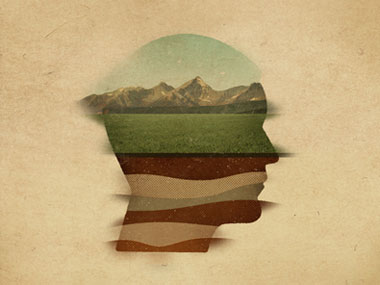Scientists now speak of the ‘Anthropocene Age’—the domination of the earth by man. It’s meant to be scientifically neutral term, as if a sentient species rapidly warming the atmosphere, depleting and destroying the oceans, and bringing about the Sixth Mass Extinction in the entire history of life on earth is normal.
 Humans are an invasive species, one that has been introduced into nearly every ecological niche on earth. Many people secretly or openly hope an Everest-size asteroid wipes us from the face of the earth so nature can begin again. Rousseau molders in his grave.
Humans are an invasive species, one that has been introduced into nearly every ecological niche on earth. Many people secretly or openly hope an Everest-size asteroid wipes us from the face of the earth so nature can begin again. Rousseau molders in his grave.
On the other side of this philosophically debased coin is the idea that man isn’t the problem, nature is, since it’s all tooth and claw out there anyway. Nature is to be exploited to the max, and climate change is a hoax China cooked up to hamstring good ‘ole American ingenuity and productivity. That view would be laughable if its proponents didn’t hold the most powerful office in the world.
Returning to reality, not one scientist I know of asks why man, which evolved in nature along with every other species, has become such a destructive force of nature. Of course, most scientists and philosophers believe in a meaningless, entirely random universe (or multiverse, the ultimate dodge for dogmatic randomists), and see the Anthropocene Age as just another specialized subject of study.
In this part of the Great Central Valley of California, a 450-mile long and 40-60 mile wide alluvial plain between the soaring peaks of the Sierra Nevada and the comparative foothills of coastal mountains, an invasive species called the starthistle is abundant. (The Central Valley produces half of all the fruits, vegetables and nuts grown in the United States.)
This plant, besides proliferating like crazy in the few open spaces and displacing wildflowers and other native species, has a nasty defense mechanism. Despite its rather innocuous sounding name, starthistle looks like some demonic god designed it. The weed grows a multitude of small spiky balls, each with a geometrically structured number of tough, sharp thorns, any one of which easily pierces bike tires, much less human skin.
What the term Anthropocene Age actually means is that humans are an invasive species like the starthistle, only much more prolific and destructive, disrupting the ecological balance and precipitating the widespread extinction of flora and fauna on a planetary scale.
Any philosopher, or for that matter scientist worth his or her salt asks: How did this state of affairs come to be?
The explanation won’t change the explained, and no theory of human nature (which pertains to the relationship between humans and nature, not just ideas about human nature) is perfect. But here is a workable one that holds up to science’s standards of reason, evidence and testability.
These are my long-standing premises: The universe is ‘fine-tuned’ for life. Biology follows the same basic laws everywhere, not just on Earth in this solar system, which is one of trillions of planets and solar systems; and not just in this galaxy, which is one of hundreds of millions of galaxies in the known universe.
Simple life is common; multicellular life is uncommon. Technological species are rare; technological species that have made the transition from planet-plunderers to genuinely intelligent life very rare.
The evolution of symbolic thought is based on the ability to consciously separate and manipulate ‘things’ in the environment. But ‘higher thought’ carries with it the tendency to divide and fragment the home planet’s interwoven ecosystems to the breaking point, and accumulate darkness in consciousness to the breaking point of all but the strongest individuals. Complicating things further, the evolution of symbolic thought also gives the brain the potential for the highest awareness.
Science cannot be used to solve a problem in which science is embedded. There is no science without the evolution of consciously separative thought, which can be used intelligently (such as to amass scientific knowledge), or unintelligently (such as to build hydrogen bombs). Therefore science, much less technology, cannot change humankind’s disastrous course.
If this is an accurate diagnosis, what is the prescription? Extending the starthistle metaphor a step further, the more individuals do the spadework of clearing away the weeds of millennia within, the more human beings grow.
This process, which is both arduous and playful, involves seeing what is false as false, and not calling it true, as humans are so inclined to do.
Seeing the true requires nothing but acknowledgement. But seeing the false, however ‘bad,’ requires remaining with what is and observing oneself without judgment.
Each of us is a microcosm of humanity. The observer is the judger, chooser and the self. Negate that habit with awareness and remain with what is, and you’re on your way.
Then you’ll be contributing to the enlightenment rather than the endarkenment of humanity.
“This mountain of release is such that the ascent’s most painful at the start, below; the more you rise, the milder it will be. And when the slope feels gentle to the point that climbing up sheer rock is effortless as though you were gliding downstream in a boat, then you will have arrived where this path ends.”
Dante
Martin LeFevre

